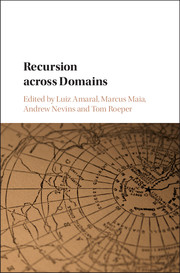Veneeta Dayal of Yale University will present “The Fine Structure of the Interrogative Left Periphery” in the GLSA Linguistics colloquium series Friday April 12th at 3:30. All are welcome!
Abstract: In this talk I explore the possibility that there are three points on the left periphery where interrogative meaning is built up, CP+WH, Force-P+Q, SAPASK:
[SAP SA0ASK [Force-P Force0+Q [CP C0+WH [TP]]]]
At CP, the +WH specification takes the TP denotation and creates a set of propositions, the semantic type for questions. At SAP, the question is anchored to the context of utterance via speaker and addressee co-ordinates. CPs are canonically what we find in complement positions, SAPs what we find in matrix questions and quotations. This two-way distinction, I would venture to say, is relatively uncontroversial or at least less radical sounding than the postulation of a three-way distinction.
I argue for a third structural position, in between CP and SAP, with a distinct semantic profile. I call this position Force-P+Q. While the term Force-P is familiar from Rizzi (1997), the characterization of this position is likely different from what has so far been assumed in the literature. I argue that Force0+Q takes a set of propositions (a question denotation) and turns it into a centered question, a question that is crucially active for someone. This allows Force-P to either feed into SAP, and be linked to a contextually provided anchor, or enter into a complementation relation with a predicate and be linked to an argument of that predicate.
The empirical justification for the three-way distinction in interrogative syntax-semantics comes from the following inter-related phenomena, which will be discussed in some detail in the course of the talk: embedding predicates, subject-aux inversion, biased questions, (polar) question particles, intonational contours, alternative vs. polar questions. In doing so, I draw on earlier collaborative work with Jane Grimshaw (Dayal and Grimshaw 2009) and Rajesh Bhatt (Bhatt and Dayal 2014 and subsequent versions), while absolving them of all responsibility for anything in this proposal that they may not have signed on to.


